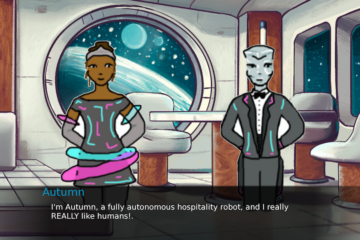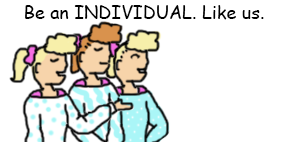This is a post about revising, which means it’s also a post about drafting. Sorry. You have to see the drafting to understand the editing. I promise it’s over quickly.
I write my stories from rough outlines, usually a list of scenes I want to have happen like this:
A. Sue at work, discovers problem
B. Introduce Joey, he doesn’t think it’s really a problem.
C. Sue tries to fix the problem with beeswax soap.
D. Joey sabotaged the soap.
E. Sue fixes the problem by bashing it with Joey’s face. The end.
Wow, that would actually be one of my better outlines. Way to go, blog-post-writing-brain!
Imagine the outline points as dots on a map, and the story is the journey you take to reach all those dots.
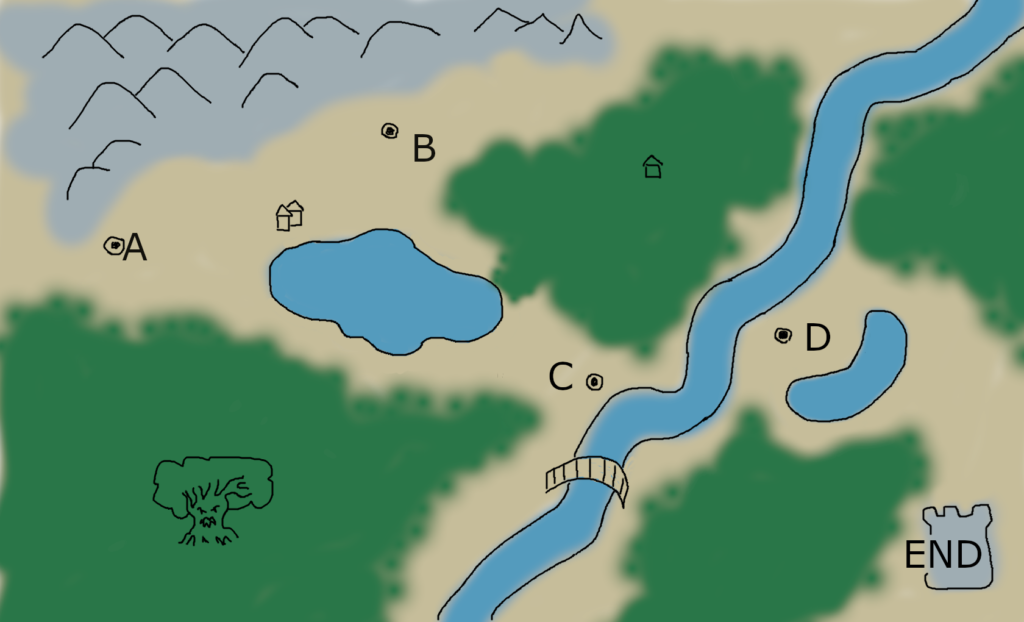
Now, just going straight from dot to dot isn’t realistic. No one would make this journey and it’ll feel forced in reading:
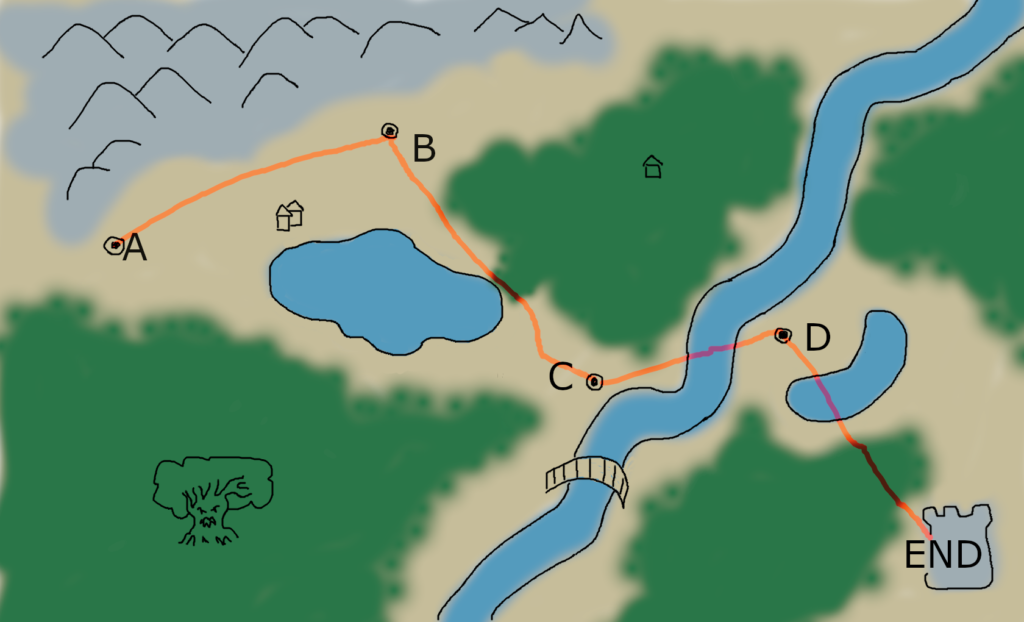
Ever have a friend tell you a boring story like “I am always having trouble at work with Jeremy. So today I went in and Jeremy was there. That annoyed me, because I’m always having trouble with Jeremy.” If nothing changes from the first statement to the last, it’s not really a story, it’s a declaration.
We’re not commuting to the end, we’re strolling. Reading the story, for the ultimate audience, will be a process: the point is the journey not the end. We want the journey to be interesting in itself. That’s where the reader lives and experiences it. Put yourself in their hiking boots.
One of the hardest parts of writing is choosing where to start your journey. Right on that first dot? You want it close. My drafts will tend to have a few false starts.
Then I’ll get this idea to describe Sue’s obsession with beeswax and it’ll add a new scene, or I get lost in the woods or the mountains of backstory because I’m feeling my way toward something; I had this vague idea the real theme is in the mountains, and some of those scenes go… nowhere. They’re dead-ends and I have to backtrack or drop them and pick the story up where they started.
Chances are, by the time I finish my first draft, the journey looks like this:
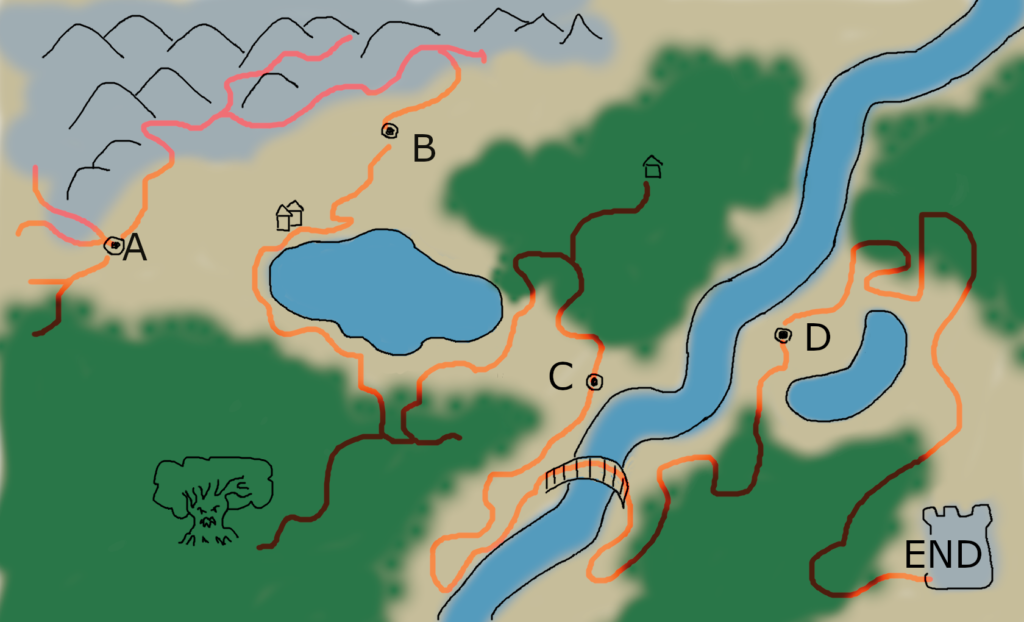
Longer fiction is where I really get in trouble with the extra meanderings and backtracks. Some of them are real darlings, beautiful passages with a killer one-liner, and I try all I can to keep them in, but ultimately, they have to go. They are bogging the reader down. They can muddy the sense of the plot structure in the character’s mind, making your careful plans feel like so much improvisation.
Recently, I was editing a novel draft that had a muddy middle, and I’d already edited that muddy middle part a half-dozen times but this time I realized… there were unnecessary meanders in the path. Big long loops that could be shortcuts. I took only what the plot needed and cut those loops free. Goodbye, dinner scene. Two chase scenes are now one.
It felt like this – the pink line – an improved path that mostly followed draft one, but diverged in careful, important places.
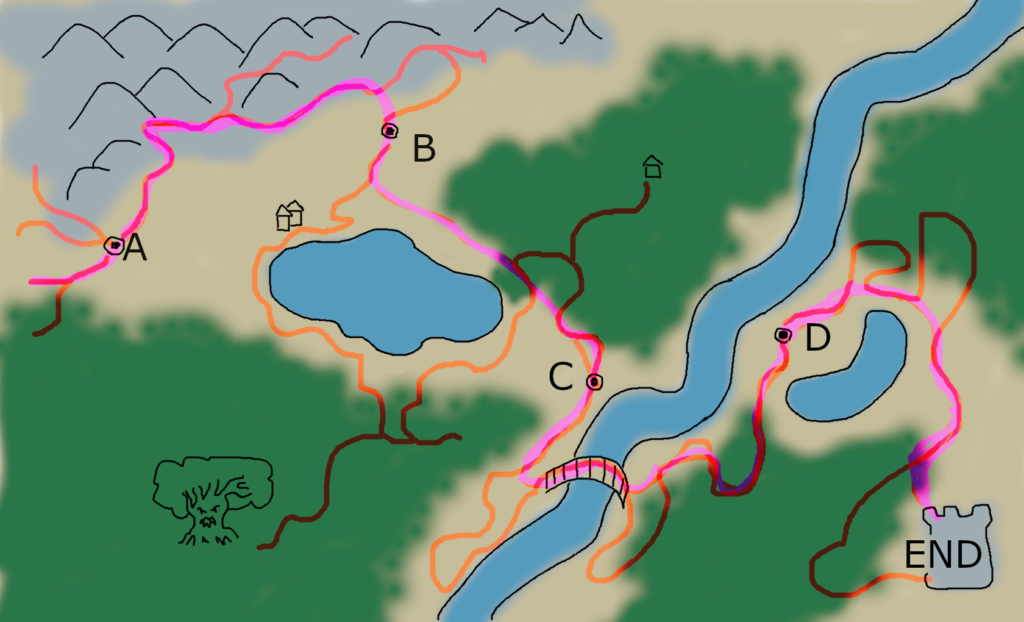
It’s like that lovely old quote, “The path is made by walking it.” In my revision pass, I read the story like a reader, I felt where it was going and wanted to go and needed to go and where I expected it to go and where I didn’t. Places where I was losing interest, that were dragging, almost always turned out to be these unnecessary divergences.
After cutting those loops, the journey still isn’t a straight line, so the plot feels natural and like it has unexpected turns, but we’re also not wasting time backtracking or getting characters into the same room. The closest beginning to the first plot point was chosen. The scary tree scene in the forest? Sadly, cut completely. Hey it wasn’t really working. All that meandering and false-starting trying to get to it was a sign I was forcing the characters and plot away from their natural course just because I had this idea for a scary tree scene. Scary tree will make it into the sequel, maybe.
I think it is helpful to stop and look at the course your story takes, the path, and see how to make that path feel inevitable yet unexpected. Make the abstraction tangible in your mind, however it makes sense to.
